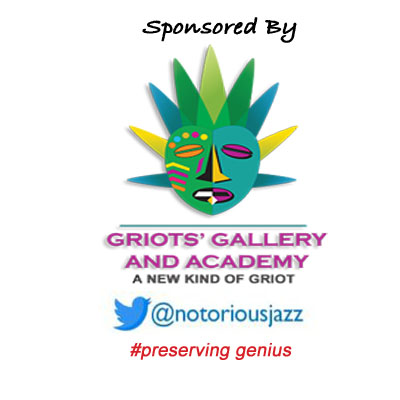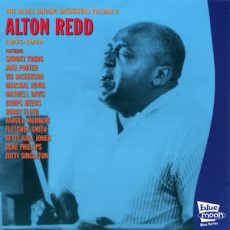
Daily Dose Of Jazz…
Fletcher Smith was born on September 22, 1913 in Lincoln, Nebraska and was orphaned by the age of eight. He and his siblings moved in with their grandfather who had a nine-room house. When the Lloyd Hunter Serenaders came through Lincoln and there was a guitar player there named Finney. He asked Finney to teah him to play if he could get his uncle to buy him a banjo. He wrote out a chart of chords and gave him lessons when he came back.
Smith played for Cootie Williams in 1943 and in the following years with Slim Gaillard, King Perry, Varetta Dillard, Jimmy Rushing, Big Maybelle, Linda Hopkins, Sister Rosetta Tharpe, Stick McGhee, Mickey Baker, Percy Mayfield, and Geechie Smith. In the Fifties he performed with Earl Bostic, Percy Mayfield, Benny Carter, Billy Eckstine, Lionel Hampton, Les Hite, and the Ink Spots, among others.
Under his own name, Fletcher Smith’s Squares and Fletcher Smith’s band, he played in the 1950s and recorded several singles such as Mean Poor Gal, Ting Ting Boom Scat or Shout, Shout, Shout. He recorded extensively as a sideman and toured most of the United States with various organizations. During the early 1970s he was a popular artist in Paris, France performing with the Golden Gate Quartet. From 1981 to 1991 he was featured in Las Vegas, Nevada.
Upon his return to Los Angeles, he became one of the mainstays of the Southern California music scene, he continued playing and honing his book of tunes and arrangements until his death. Pianist and bandleader Fletcher Smith died on August 15, 1993 in Los Angeles, California.
More Posts: bandleader,history,instrumental,jazz,music,piano
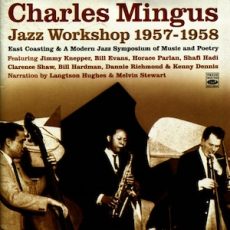
Daily Dose Of Jazz…
Shafi Hadi was born William Curtis Porter on September 21, 1929 in Philadelphia, Pennsylvania to William Porter and Harrietti Porter. He received piano lessons from his grandmother at age 6. He went on to study musical composition at Howard University and University of Detroit. He performed with rhythm and blues artists such as Paul Williams, Ruth Brown, and the Griffin Brothers.
He recorded with bassist Charles Mingus between 1956 and 1958. He also recorded with tenor saxophonist Hank Mobley. Hadi improvised the soundtrack music for John Cassavetes’s film Shadows, then returned to Mingus’s group in 1959. He also collaborated with Mary Lou Williams on her 1977 composition “Shafi”, although the extent of his contribution is unclear.
Between 1965 and 1969 Shafi co-wrote five songs with Lionel Hampton or Gladys Hampton: Bye, Bye, Hamp Stamps, No, Say No, A Sketch Of Gladys, and Mama Knows.
Tenor and alto saxophonist Shafi Hadi died in June 1976, at the age of 46.
More Posts: bandleader,history,instrumental,jazz,music
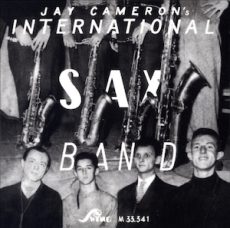
Daily Dose Of Jazz…
Jay Cameron was born in New York City on September 14, 1928. He began as an alto saxophonist but later recorded with bass clarinet, B-flat clarinet, and baritone saxophone. His career began in the early 1940s in Hollywood, California with Isaac M. Carpenter’s band, with whom he played until 1947.
Moving to Europe near the end of the decade he played with Rex Stewart, Bill Coleman, Roy Haynes and Henri Renaud in France and Italy. By the early 1950s Cameron was gigging around Belgium, Germany, and Scandinavia. Returning to Paris, France in 1955 he played steadily with a band that included Bobby Jaspar, Barney Wilen and Jean-Louis Chautemps.
Back in the United States in the mid-Fifties Jay played in the bands of Woody Herman, Chet Baker, Dizzy Gillespie, Maynard Ferguson, Freddie Hubbard, Candido Camero, Bill Barron, André Hodeir, Hal McKusick, and Les and Larry Elgart. In 1960 he played with Slide Hampton, also led the International Sax Band and the Third Herdsmen, and late in the decade, he toured with Paul Winter.
Bass and B-flat clarinetist and baritone saxophonist Jay Cameron died in San Diego, California on March 20, 2001.
More Posts: bandleader,clarinet,history,instrumental,jazz,music,saxophone
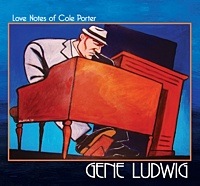
Daily Dose Of Jazz…
Gene Ludwig was born on September 4, 1937 in Twin Rocks, Cambria County, Pennsylvania and raised in the boroughs of Wilkinsburg and Swissvale, near Pittsburgh, Pennsylvania. He began studying the piano at age 6 and became interested in rhythm and blues after hearing Ruth Brown, Big Joe Turner and organists Bill Doggett and Wild Bill Davis.
Graduating from Swissvale High School in 1955, he studied physics and mathematics at Edinboro State Teachers College. He left due to his father going on strike at Westinghouse Electric, and returned to Pittsburgh to work in construction.
Ludwig began performing in local vocal groups before hearing organist Jimmy Smith perform at the Hurricane nightclub in Pittsburgh’s Hill District. That initial encounter inspired him to take up the Hammond organ. He bought several organs before settling on the B-3 after sharing a bill with Jimmy Smith in 1964 in Atlantic City, New Jersey.
Traveling along the East Coast and to Ohio, he performed jazz and rhythm and blues, and released numerous singles and albums as a leader and a sideman. Gene released a 45-rpm single of the Ray Charles song Sticks & Stones in 1963, then in 1967 he released Mother Blues on Johnny Nash’s Jocida record label. He went on to replace Don Patterson in saxophonist Sonny Stitt’s band in 1969, appearing on Stitt’s album, Night Letter.
Ludwig toured with bass-baritone vocalist Arthur Prysock and guitarist Pat Martino. He released the album, Now’s the Time, in 1980 on Muse Records, and continued to travel and work through the ’80s and ’90s, regularly performing at Pittsburgh’s Crawford Grill and James Street Tavern. He signed with Loose Leaf/Blues Leaf Records in 1997 and released the albums Back on the Track, Soul Serenade, The Groove ORGANization, Hands On, and Live in Las Vegas, for the label.
Hammond B-3 organist Gene Ludwig, who was a prominent figure on the Pittsburgh jazz scene, died in Monroeville, Pennsylvania on July 14, 2010. A posthumous album, Love Notes of Cole Porter, was released in 2011 by Jim Alfredson’s Big O Records.
More Posts: bandleader,history,instrumental,jazz,music,organ
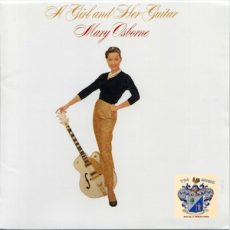
Daily Dose Of Jazz…
Mary Osborne was born in Minot, North Dakota on July 17, 1921 into a musical family. As early as age three she showed an interest in music with her earliest instruments including piano, ukulele, violin, and banjo. At nine, she picked up the guitar. At ten, she started playing banjo in her father’s ragtime band. She was featured on her own radio program, performing twice weekly until she was fifteen. At twelve she started her own trio of girls to perform country music in Bismarck, North Dakota.
By the time she turned fifteen, Osborne joined a trio led by pianist Winifred McDonnell, for which she played guitar, double bass, and sang. After hearing Charlie Christian play electric guitar she immediately bought her own electric guitar and had a friend build an amplifier. She sat in with Christian to learn his style of guitar. Her husband and trumpeter Ralph Scaffidi encouraged her musical career.
The early 1940s saw Mary sitting in on jam sessions on 52nd Street, on the road with jazz violinist Joe Venuti and working freelance in Chicago, Illinois when she made a recording with Stuff Smith. In 1945, Osborne headlined a performance with Dizzy Gillespie, Art Tatum, Coleman Hawkins, and Thelonious Monk in Philadelphia, Pennsylvania to reviews and audiences that praised her specifically. She, Tatum, and Hawkins went on to record a concert in New Orleans.
Returning to New York City she recorded with Mary Lou Williams in 1945, Coleman Hawkins, Mercer Ellington, and Beryl Booker in 1946, and led her own swing trio. For three years her trio played 52nd street clubs, had a year-long engagement at Kelly’s Stables, and made several recordings. Throughout the 1950s, she played with Elliot Lawrence’s Quartet on The Jack Sterling Show, and appeared on the television show Arthur Godfrey’s Talent Scouts.
By the Sixties her focus changed to learning Spanish classical guitar under Alberto Valdez-Blaine and incorporated pick-less playing into her jazz playing. Osborne moved to Bakersfield, California, where she lived the rest of her life, and founded the Osborne Guitar Company with her husband. Mary taught music and continued to play jazz locally and in Los Angeles, California as well as several jazz festivals over the next two decades.
Guitarist Mary Osborne died on March 4, 1992 at the age of 70, the result of chronic leukemia.
More Posts: bandleader,guitar,history,instrumental,jazz,music



